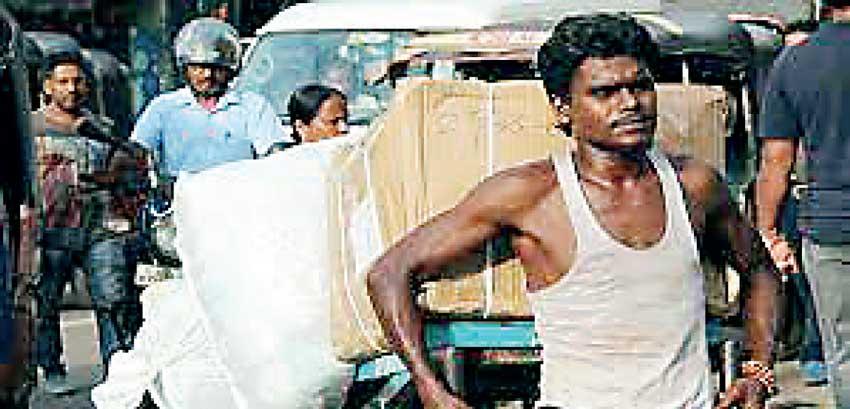Reply To:
Name - Reply Comment

Sri Lanka’s income inequality further worsened last year as the poorest suffered the largest proportionate earnings shock, while the smallest proportionate income losses were suffered by the rich due to mobility restrictions imposed to contain the COVID-19 pandemic, which resulted in unequal opportunities favouring higher income earners.
“The richest tend to have formal, secure jobs and better access to digital technology that allows them to conduct wage work or business operations remotely. They are also more likely to be working in the services sector, which suffered the smallest aggregate impact,” a recent World Bank (WB) report said.
In 2020, the Gini index that measures income inequality slightly increased to 39.8 in 2020 from 39.3 percent in the previous year.
“This is concerning given that Sri Lanka had relatively high inequality in comparison to peers even before the crisis,” the
WB remarked.
According to the household income and expenditure survey 2016, Sri Lanka’s richest 20 percent enjoyed over half the total household income of the country, while the poorest 20 percent got only 5 percent.
The WB pointed out that unequal opportunities to work from home (WFH) have introduced new economic and spatial divides as working remotely is nearly exclusively an option for high-income earners, and small and medium-sized enterprises were unlikely to adapt to digital technologies.
Around 27 percent of workers in the country possessed potentially tele-workable, the WB said outlining the inequalities among different income levels.
“To be able to tele-work, one does not only need a job that allows for it, but also digital access. Refining the share of tele-workable jobs – by controlling for the ownership of a digital device (desktop, laptop or tablet) and the ability to use it – widens the divide since many poor access the internet only through their mobile phones, if at all. Almost no one in the lower half of the income distribution can actually work from home, and even among the higher-middle income earners the share is only around 10 percent,” the WB elaborated.
Meanwhile, the WB estimated Sri Lanka’s poverty levels to have increased from 9.2 percent in 2019 to 11.7 percent in 2020 with estimated 500,000 falling into poverty in the year. The people living in extreme poverty (US$ 1.9 in 2011 PPP) doubled in the year to 1.2 percent of the population.
Moreover, the poverty gap, which measures the distance to the poverty line, is also estimated to have increased from 17.9 percent in 2019 to 20.0 percent in 2020, implying that not only are there more poor people, but also that the poor have fallen deeper into poverty.
According to a survey conducted by the WB, more than half of participants in the labour market suffered a market shock, primarily in the form of earnings losses (reported by more than 30 percent) while a more modest impact occurred through temporary absence and job losses.
In particular, poverty nearly doubled among households where the head of the household was employed in accommodation and food services and by 50 percent in the construction sector.
The WB highlighted that around 12 percent of the new poor, compared to about 6 percent of the old poor, live in urban areas. “The Western Province, which is highly urbanised, accounted for the largest share of the new poor across provinces. While the Western Province has the lowest poverty rate across provinces, at around 4 percent in 2019, an increase to 5.7 percent is expected in 2020,” it added.
The poverty rate also increased across districts, Kandy and Ratnapura, which had the largest number of pre-pandemic poor concentrated. Though annual inflation recorded at 4.6 percent in 2020, food inflation remained high at around 10 percent since the second half of 2020. The share of food expenditure in the country’s total expenditure is above the emerging market average at over 40 percent.
Therefore, the rising inflation, import restrictions and the high debt burden are expected to limit efforts in poverty reduction. “Continued import restrictions and the high debt burden will adversely affect growth and poverty reduction over the medium-term. Inflationary pressure is expected to materialise in 2021-2023 due to the partial monetisation of large fiscal deficits,” the WB noted.